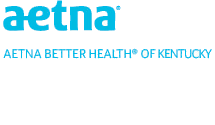Ebstein Anomaly
What Is Ebstein Anomaly?
Ebstein anomaly is a rare heart defect that affects the tricuspid valve (one of the heart's four valves). It happens because of a problem with how the valve forms before a baby's birth.
What Happens in Ebstein Anomaly?

Anomaly means "something different." In Ebstein anomaly, the "something different" is the position of the tricuspid valve and the way its parts move.
The tricuspid valve sits between the upper right chamber (right atrium) and the lower right chamber (right ventricle) of the heart. Normally, when the heart muscle relaxes, this valve is open, letting blood flow into the right ventricle. When the right ventricle squeezes to pump blood out of the heart, the tricuspid valve's three "leaflets" close to prevent backward leakage of blood from the right ventricle to the right atrium.
In Ebstein anomaly, the valve is sunken into the right ventricle, and one or two of its leaflets are stuck to the heart wall. The third leaflet is usually floppy. This prevents the valve from working well. Often, the valve can't close completely, so blood leaks back through the tricuspid valve into the right atrium. When a lot of blood leaks back, this enlarges the right atrium and makes the right ventricle smaller.
Less commonly, the tricuspid valve in Ebstein anomaly is tight, preventing normal forward flow from the right atrium to the right ventricle. In some cases, the right ventricle is too small to pump enough blood to meet the body's needs. These problems may make it harder for the heart to pump blood well.
What Are the Signs & Symptoms of Ebstein Anomaly?
Ebstein anomaly can cause problems that range from very mild to very serious. Kids with a milder form of the anomaly may not have any symptoms until they're older.
Two signs that an infant or child may have Ebstein anomaly are trouble breathing and a bluish coloring of the skin and nails (cyanosis).
Ebstein anomaly also can make a child:
- fail to grow as expected
- tire quickly
- feel short of breath
- cough a lot
- feel a rapid heartbeat (palpitations)
- struggle to keep up with other kids in physical activities
In severe cases, a child also might have swelling (edema) in the legs or fluid in the belly (ascites). Doctors often hear extra heart sounds, including a murmur, when listening to a child's heartbeat.
A baby born with Ebstein anomaly often has other heart problems, such as an atrial septal defect (an abnormal hole between the upper chambers of the heart) or a patent foramen ovale (PFO, a normal opening between the upper chambers of the heart that usually closes shortly after birth). When either of these holes are open, oxygen-poor blood from the right side of the heart can leak into the left side of the heart and out to the body. This leads to a lower oxygen level in the bloodstream and the bluish color of the lips and nailbeds.
In some children, the pulmonary valve (the other valve on the right side of the heart) may also be tight (called pulmonary stenosis) or even sealed off (pulmonary atresia). These pulmonary valve problems also contribute to cyanosis.
Ebstein anomaly often affects the heart's electrical system. Some kids will have an extra electrical pathway called Wolff-Parkinson-White syndrome (WPW), which can cause a very fast heartbeat (tachycardia) or an unsteady beat.
What Causes Ebstein Anomaly?
Doctors don't know exactly why a baby's heart develops Ebstein anomaly during pregnancy. But it isn't caused by anything a mother does or doesn't do during her pregnancy.
Most cases of Ebstein anomaly are due to an accidental error of growth during pregnancy. Some genetic links have been found, but most cases don't have a known genetic cause.
How Is Ebstein Anomaly Diagnosed?
Ebstein anomaly might be seen on ultrasound scans before birth. It may be recognized at birth because the baby's skin looks blue or the baby's heart makes unusual sounds.
The best test to confirm Ebstein anomaly is an echocardiogram (ultrasound of the heart).
Other tests may include:
- chest X-ray, which often shows a very large heart
- electrocardiogram (also called ECG or EKG), a recording of the heart's electrical activity. It may show abnormal heartbeats or signs that the heart's right chambers are enlarged.
- exercise test (for older kids who can follow instructions)
How Is Ebstein Anomaly Treated?
If the defect was found before birth, the delivery team will be ready to provide intensive care right away in case the newborn is not doing well. But most newborns with the anomaly don't need immediate treatment. Doctors will monitor them closely to watch for changes and provide quick treatment if needed.
Some children with Ebstein anomaly don't need treatment.
When treatment is needed, the most common types used are:
Oxygen
Extra oxygen can help increase the amount of oxygen in the blood, and help the heart meet the body's needs.
Surgery
If a baby's life is in danger, urgent surgery may be done within a few days of birth. A baby with less serious effects may have surgery months to years later.
Medicines
Medicines can help keep the heart from beating too fast and treat heart failure (when the heart can't meet the body's demands) if it develops.
Electrophysiology Study
Doctors may recommend an electrophysiology study (EP study) when there are serious abnormal heart rhythms. During this study, (freezing or burning) can get rid of electrical pathway fibers that make the heart beat too fast.
What Else Should I Know?
Babies with Ebstein anomaly need care from a pediatric cardiologist (a doctor who diagnoses and treats children's heart problems) because the heart's pumping ability may fall short as the child grows. The doctor will recommend treatment that is tailored to a child's needs.
Many children whose Ebstein anomaly was corrected by surgery can be as active as other kids.
